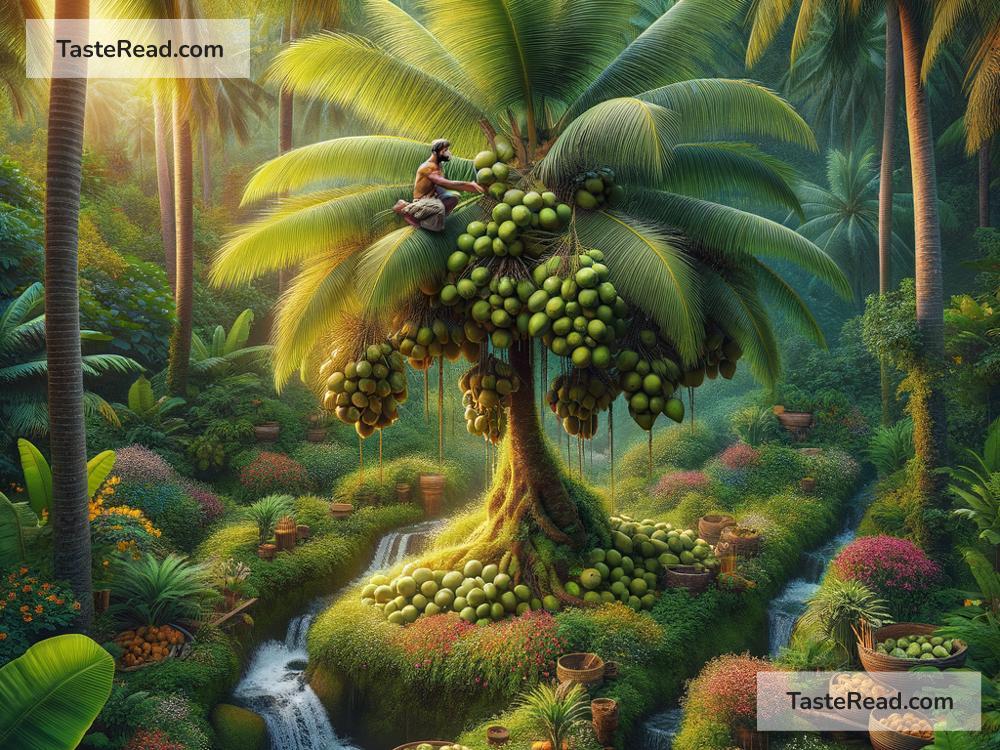Why Coconuts Are Called the Tree of Life
Coconuts are often referred to as the “Tree of Life,” and there’s a good reason for this nickname. For centuries, people across the world, especially in tropical regions, have relied on coconut trees not just for food but for building materials, medicine, and even cultural traditions. The coconut tree is incredibly versatile, providing so much to humans that it has earned a special title. In this blog, we’ll dive into why coconuts are called the Tree of Life, and how this remarkable tree is vital for survival and sustainability.
What Is a Coconut Tree?
A coconut tree is a tall palm tree that grows in warm, tropical areas. It thrives near coastlines and can be found in countries like Indonesia, the Philippines, India, and many parts of the Pacific Islands. The coconut itself is the fruit of this tree. While most people think of coconuts as a tasty snack or a source of coconut water, the tree is much more than that. Nearly every part of the coconut tree can be used in some way — and that’s why it’s considered so special.
What Makes the Coconut Tree So Valuable?
The coconut tree has earned the title of the Tree of Life because of its ability to provide for nearly all human needs. Let’s break it down into the essentials.
1. Food and Drink
Coconut fruits are packed with nutrition. The flesh (called coconut meat) is rich in healthy fats, vitamins, and minerals. You can eat it raw, dry it into flakes for cooking and baking, or extract coconut oil from it. Coconut water, which is found inside the fruit, is a natural, refreshing drink that hydrates the body and is full of electrolytes like potassium and magnesium. In areas where fresh water is scarce, coconut water has even been used as an emergency drink.
The coconut tree can provide food all year round, making it a reliable source of nourishment for communities.
2. Medicine and Health
People have long used various parts of the coconut tree for traditional medicine. Coconut oil, for example, is known for its anti-inflammatory and antibacterial properties. It’s used to treat wounds, skin conditions, and even digestive issues. Coconut water is believed to help with urinary problems and maintain kidney health.
Even the roots of the coconut tree are used to make herbal remedies to treat mouth infections and some illnesses.
3. Shelter and Building Materials
The coconut tree is more than just food — it provides shelter too. The wood from the trunk of the tree is strong and can be used to build houses, boats, furniture, and tools. The leaves of the coconut tree are often used for roofing or woven into mats, baskets, and other household items.
In areas affected by storms, coconut trees offer people a quick and reliable way to rebuild their homes using local materials.
4. Clothing and Household Items
The fibers from the coconut husk, called coir, are used to make ropes, mats, brushes, and even mattresses. Coir is strong, durable, and biodegradable, making it an eco-friendly material. The leaves can be woven into mats or used to create clothing. In tropical communities, these resources are essential, especially in rural areas.
5. Fuel
Even after the coconut itself is harvested, its shell and husk do not go to waste. Dried coconut shells can be burned to produce heat or used as charcoal. This is especially helpful in areas where fuel sources like gas or electricity may not be available.
6. Economic Importance
Coconut trees aren’t just useful for survival; they also support the economy. Many countries rely on coconut production and exports to generate income. Coconut oil, coconut milk, and desiccated coconut (dried flakes) are popular products sold worldwide. Additionally, coir and coconut-based handicrafts are highly valued and generate employment for many.
7. Cultural and Spiritual Significance
In many cultures, coconut trees are seen as symbols of life and resilience. They play a role in religious rituals, traditional celebrations, and cultural practices. For example, in Hindu ceremonies, coconuts are often offered to gods as a symbol of purity and abundance. Across the Pacific Islands, coconut palms are part of legends and represent harmony with nature.
Sustainability and the Coconut Tree
Another reason the coconut tree is called the Tree of Life is its role in sustainability. The tree produces food and materials without harming the environment. It grows in challenging conditions, helps prevent soil erosion, and provides shade for other plants. Its ability to thrive in coastal areas protects shorelines and supports biodiversity.
Because coconut trees make use of all their parts — from roots to leaves — they help reduce waste. People can reuse coconut products as natural alternatives to plastic and other harmful materials. This makes the coconut tree a perfect symbol of sustainable living.
Conclusion
The coconut tree truly deserves its nickname as the Tree of Life. It provides food, water, shelter, medicine, clothing, fuel, and income — all while promoting sustainability and protecting the environment. For many tropical communities, the coconut tree is not just a plant; it’s a source of survival, tradition, and prosperity.
So, the next time you crack open a coconut or use coconut oil, take a moment to appreciate this amazing natural gift. It’s more than just a tree — it’s life itself.


